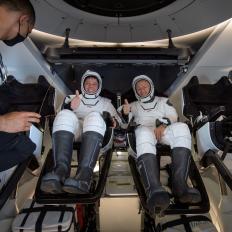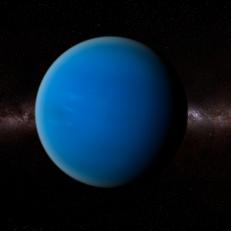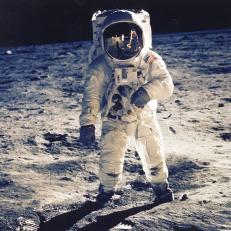The History of the Discovery of Pluto
From article clippings to photography of the telescopes used to revolutionize astronomy, Lowell Observatory shares historical images of the journey towards the 1930 discovery of Pluto.
Don't miss the I Heart Pluto Festival, an all-virtual celebration from February 13–18 to celebrate the history and magic of the outermost planet in our solar system, Pluto.
Clyde Tombaugh at the eyepiece of the guide telescope for the 13-inch astrograph he used to discover Pluto, ca. 1930.
Thomas Gill at a 9-inch telescope used in Percival Lowell’s early search for the 9th planet that he called Planet X, ca. 1915.
The 13-inch Lawrence Lowell Telescope that Clyde Tombaugh used to discover Pluto.
Staff members of Lowell Observatory in 1905. Observatory founder Percival Lowell is 3rd from right.
The 1915 publication in which Percival Lowell predicted, based on detailed mathematical calculations, the location of a theoretical 9th planet that he called “Planet X”.
Logbook used by Thomas Gill to record details of his observations with the 9-inch telescope being used to search for Percival Lowell’s theoretical Planet X. 1915.
- William Pickering, an astronomer at Harvard College Observatory, who for years independently searched for a 9th planet.
Telegram with Venetia Burney’s suggestion of Pluto as the name for the newly discovered planet. Note the gross misspelling of her name!
Percival Lowell, who in 1905 began searching for a 9th planet, which he called Planet X. Lowell died in 1916, never having found the planet.
New York Times headline announcing the discovery of the 9th planet, later to be named Pluto. March 14, 1930.
Dr. V.M. Slipher, Lowell Observatory director who in the late 1920s worked with observatory Sole Trustee Roger Putnam to recommence Percival Lowell’s search for a 9th planet.
Logbook used by Clyde Tombaugh to record details of his observations with the 13-inch Lawrence Lowell Telescope. The January 23 and 29 entries represent the Pluto discovery images.
Roger Lowell Putnam, who took over as Sole Trustee of Lowell Observatory in 1927 and one of the first things he did was to recommence Percival Lowell’s search for a 9th planet.
Venetia Burney, who at the age of 11 was the first person to suggest Pluto as the name for the new planet.
Newspaper cartoon in a Philadelphia newspaper announcing the discovery of a 9th planet, later to be named Pluto.
Clyde Tombaugh at the blink comparator machine, which he used to examine photographic plates of the night sky. It was with this machine that Tombaugh discovered the 9th planet, later to be named Pluto.
Elizabeth Williams, who for years served as Percival Lowell’s chief computer. She carried out detailed calculations in support of pinpointing the exact location of Percival Lowell’s theoretical 9th planet.
A later picture of Elizabeth Williams, the brilliant mathematician who served as Percival Lowell chief computer.
The 24-inch Clark refracting telescope, used in Percival Lowell’s early searches for a 9th planet.
Dr. EC Slipher-brother of longtime Lowell Observatory Director Dr. VM Slipher. EC first came to the observatory to help Percival Lowell search for a 9th planet. EC would go on to become a leading Mars expert.
Images of the discovery plates of Pluto. These represent pictures of a small area of the sky taken several days apart. During that span of time, stars wouldn’t appear to change position relative to each other since they are so far away. But objects much closer, such as a planet, would change position. The arrows point to a small dot that changed position on these plates. That dot is Pluto.
William Carrigan, one of Percival Lowell’s computers, with some of the devices used to make calculations to determine the position of Lowell’s theoretical 9th planet. Ca. 1915.
A typical page of calculations made by observatory computers (who were people) while trying to determine a likely location for Percival Lowell’s theoretical 9th planet.
40-inch telescope used in Percival Lowell’s early search for a 9th planet.
The blink comparator that Clyde Tombaugh used to discover Pluto.
Construction of the dome that would house the Lawrence Lowell Telescope, which Clyde Tombaugh would use to discover Pluto. 1928.
Telescope assembly used in the early search for Percival Lowell’s theoretical 9th planet.
Chief computer Elizabeth Williams eventually married Lowell Observatory colleague and astronomer George Hamilton.
























